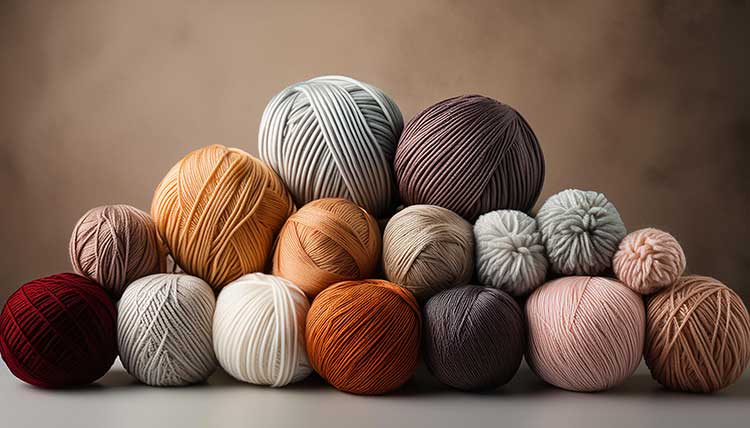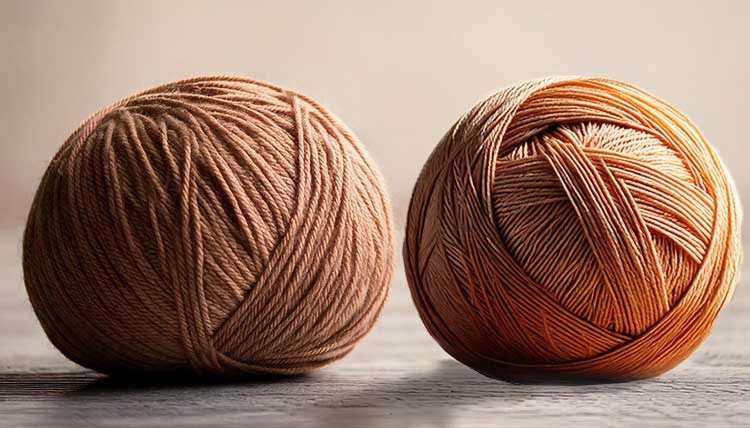How to Find the Right Yarn Substitutes

Hello, lovely knitters and crocheters! If you’re like me, the thrill of starting a new project is unmatched. But sometimes, the yarn specified in the pattern just isn’t available, or maybe it’s too pricey, or it’s just not your cup of tea. Fear not! Yarn substitution can be a fun and creative part of your crafting journey.
For a quick and easy solution, you can visit YarnSub, an amazing tool that helps you find suitable yarn substitutions. It’s straightforward to use, but if you’re unsure about some of the technical terms or want to understand more about what to look for, carry on reading this blog before diving into the tool.
What Exactly is Yarn Substitution?
Yarn substitution involves replacing the yarn specified in a pattern with a different yarn that matches key characteristics to achieve similar results. Whether you're making a snug sweater or a delightful doily, finding the right yarn substitute ensures your project turns out just as fabulous as you imagined.
Understanding Yarn Characteristics
Before diving into substitutions, let's understand the essentials:
Why Substitute Yarn?

There are many reasons to consider yarn alternatives:
Discontinued Yarn: The original yarn might no longer be available.
Availability: The recommended yarn might not be sold in your country.
Allergies: You or the recipient might be allergic to the recommended fibre.
Budget: The original yarn might be too expensive.
Climate: Wool might be too warm for your climate; a cooler fibre might be preferable.
Ethical Reasons: You might avoid animal fibres for personal beliefs.
Stash Busting: You might want to use yarn you already own.
Step-by-Step Guide to Yarn Substitution Success

Step One: Compare Weight/Put Up/WPI
What is Put Up, anyway? Put up refers to how the yarn is bundled—hanks, balls, skeins, cakes, and cones. This packaging indicates the length and weight of the yarn. By dividing the length by the weight, you get a ratio that helps you understand the yarn's thickness.
WPI Explained: WPI (wraps per inch) measures yarn thickness. Wrap the yarn around a ruler for one inch without overlapping. The number of wraps gives the WPI, helping you compare with other yarns.
Step Two: Compare Fibre Content
Match the fibre content as closely as possible. For example, substituting wool with another wool yarn usually gives the best results. Consider how the substitute fibre will impact drape, elasticity, and warmth.
Step Three: Compare Yarn Construction
Multi-Ply Yarn: Offers strength and durability. Single-Ply Yarn: Softer feel but may pill more easily. Worsted Spun vs. Woollen Spun: Worsted spun yarns are smooth and dense, while woollen spun yarns are loftier and more insulating.
Step Four: Compare Your Gauge
Gauge is crucial for achieving the correct size. Knit or crochet a gauge swatch to ensure your stitches per inch match the pattern’s requirements.
Step Five: Compare Instagram or Ravelry Projects
Visual confirmation helps. Check projects made with the original and substitute yarns on platforms like Instagram or Ravelry.
Step Six: Check With the Designer (Sometimes)
If possible, contact the designer for recommendations on suitable substitutes. They often have insights into alternative yarns that work well for their patterns.
Substituting Yarn of a Different Weight
Substituting yarn weights is a bit more complex and may involve trial and error:
Lighter or Heavier Yarn: Substituting with a different weight will change the tension and size. This is great for scarves or shawls where size is less critical.
Multiple Strands: Holding two strands of lighter yarn together can approximate a heavier-weight yarn, e.g., two strands of 4-ply for DK. This technique creates unique effects with variegated colours and different fibres.
Gauge and Swatch: Make a gauge swatch to see how the different weights affect your project.
Substituting Yarn with a Different Fibre Content

Knitters might choose different fibres for many reasons:
Allergies: Avoid fibres that cause allergic reactions.
Ethical Concerns: Vegan knitters avoid animal fibres.
Ease of Washing: Some fibres are easier to care for.
Creating Different Looks: Different fibres change drape, texture, and warmth.
Think carefully about the properties of the original fibre and how they affect the finished piece. For example, cotton has a beautiful drape but doesn’t hold its shape well and stretches easily, so it may not work as a wool substitute.
Yarns like mohair and alpaca have distinctive halo effects that will be lost if substituted, affecting the appearance of your piece. Most sock yarns are blends of wool, merino, and nylon; substituting with pure wool might cause felting or tearing at the heels and toes.
Yarn Substitution Tips
Stay Flexible: Perfect substitutes are rare. Experiment with different yarns and fibres.
Check Reviews: Recommendations from other crafters can be very helpful.
Consult Charts: Yarn substitution charts offer equivalent options based on yarn weight and fibre.
The Maths (Don’t Worry, It’s Easy!)
Once you've chosen your substitute yarn, a bit of simple maths will ensure you have enough. Here’s how:
1. Work Out Total Length of Original Yarn:
Multiply the length per ball by the number of balls needed.
Example: Original yarn is 100g balls, 298 metres long, and you need 12 balls.
Calculation: 298m x 12 = 3576 metres.2. Divide by Substitute Yarn Length:
Example: If your substitute comes in 50g balls, 125 metres each.
Calculation: 3576m / 125m = 28.6 balls. Round up to ensure you have enough, so you’ll need 29 balls.
Examples of Yarn Substitutions
There are many different types of yarns and combinations that can be substituted, here are a few common types that can be easily interchanged.
Wool to Acrylic: Acrylic is durable, easy to care for, and available in many weights.
Cotton to Bamboo: Bamboo is soft, breathable, and perfect for summer garments.
Alpaca to Mohair: Alpaca provides warmth and softness, making it a good alternative to mohair.
Holding Yarn Double
Holding two strands of lighter-weight yarn together can create a yarn that matches the required weight. This technique opens up more possibilities for substitutions.
Wrapping Up
Finding the right yarn substitute can enhance your crafting experience and lead to beautiful, unique projects. With these tips, you’ll be well-equipped to choose the perfect yarn and make any pattern your own. Happy crafting, and may your yarn adventures be ever joyful!
If you would like to discover more about yarns and set your next creative project off on the best foot, then read our Comprehensive Guide on Wool and Yarn: All You Need to Know .

